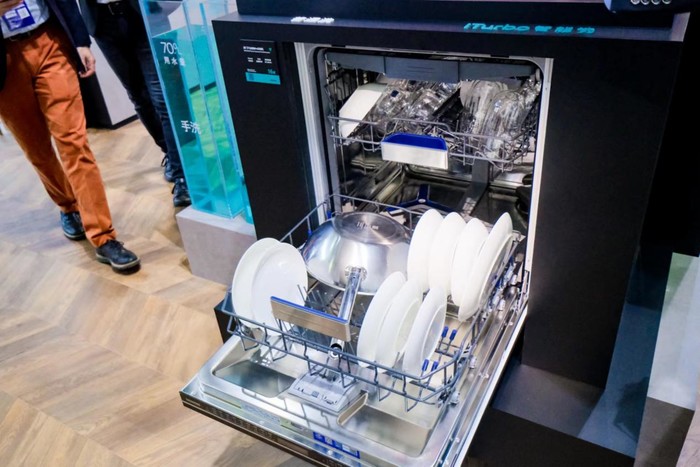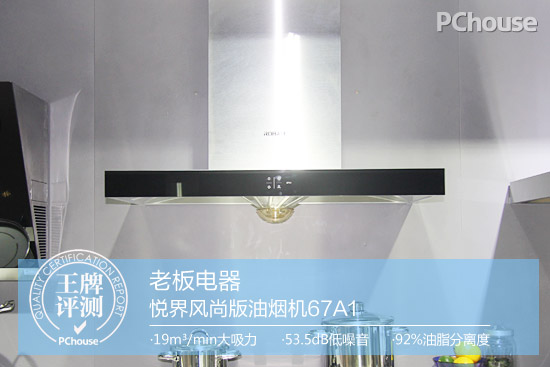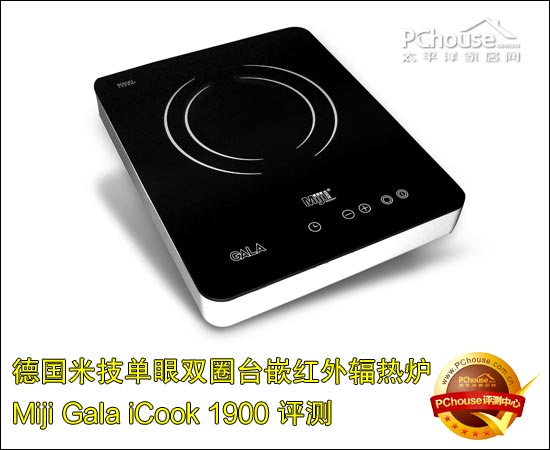The current pandemic has turned many into ‘germaphobes’, with a friend finally deciding to purchase a dishwasher. After waiting for the delivery for more than half a month, she cried and demanded a return on the second day of receiving it because her kitchen cabinet couldn’t accommodate it… What a painful realization! A dishwasher is an appliance, not a dishcloth. Didn’t she do her homework before ordering? Wake up, if you really want to buy a dishwasher, please take the time to read this guide first, instead of criticizing dishwashers after buying the wrong one. Don’t know where to start? Here are three recommendations for you to choose from:
1. Most Universal: For those who want to temporarily add a dishwasher, a more affordable countertop dishwasher can be purchased for around 1-2k, allowing for flexible placement and movement. It is the first choice for many renters, but the biggest drawback is its limited capacity, only suitable for one meal at a time, and cannot accommodate large utensils. If you don’t want to renovate your kitchen cabinet but want a large capacity, consider a larger standalone dishwasher, provided that your kitchen is big enough.
The volume and weight are not large, and even a young girl can move it easily. Disadvantage: Even if the volume is small, it still occupies at least half a square meter of countertop space. At the same time, its capacity is the smallest among the three types.
Cabinet-style dishwashers: Advantages: Integrated with the cabinet, it is aesthetically pleasing and space-saving. It has a large capacity and can even accommodate a wok for washing. Disadvantages: First, you need to have a cabinet. Second, before installing the cabinet, you need to reserve an installation position according to the size of the dishwasher, and also consider factors such as the socket position and the inlet and outlet water ports. If you buy a dishwasher after having a cabinet, you will be more restricted. Of course, you can also place it directly on the countertop or the floor, but except for the front side, the movement parts of the other four sides are exposed, which is not very aesthetically pleasing. Sink-style dishwashers: Advantages: They are beautiful and generous. Their height is the same as that of the sink, so there is no need to bend down when using them, and it is more convenient to take and place tableware. Disadvantages: As long as there is a reserved sink position, they can generally be installed. However, the dishwasher will occupy most of the sink space, and its capacity is smaller than that of the cabinet-style dishwasher. In addition, the maintenance cost is high. In case the dishwasher breaks down one day, not only do you need to disassemble the water pipe, but the sink may also become unusable. Key points: ① Price: Tabletop < Cabinet-style dishwasher / Sink-style dishwasher ② Capacity: Tabletop < Cabinet-style dishwasher < Sink-style dishwasher ③ Installation procedure: Tabletop < Sink-style dishwasher < Cabinet-style dishwasher 02 Opening modes: The most unassuming details are also crucial. Many people may wonder why we need to pay attention to the opening mode.恐怕 only those who use dishwashers can have a deeper understanding. Because the opening mode not only has different requirements for the installation position but also greatly affects the user experience. Dishwashers can be roughly divided into three categories: front-opening, top-opening, and drawer-style (push-pull). Front-opening: The most common opening mode. Open the front panel 90 degrees downward and flatten it, then pull out the cutlery basket to store tableware. When placing tableware, the oil stains drip onto the inner panel of the dishwasher as the tableware is tilted. Generally, when using a front-opening built-in dishwasher, you usually need to bend down and squat to place the tableware, and the operation experience is not particularly user-friendly. Top-opening means lifting the panel to a certain height. Generally, there is no need to pull out the cutlery basket, and you can directly place the bowls. Wing-shaped top-opening can pull the panel up to about 135 degrees. Some dishwashers adopt a combination of upper and lower opening methods to maximize the capacity expansion. The most common top-opening is the sink dishwasher, that is, the “flip-top machine”, and the panel can be opened 90 degrees upward. Drawer-style is a relatively niche opening mode. It is as simple as using a drawer. You can complete the taking and placing of tableware with a simple push and pull, and all the dirt drips into the dishwasher.Voice-activated door opening: In addition to the manual door opening methods mentioned above, some products have introduced a ‘voice-activated door opening’ feature. After connecting to the network, the door can be controlled by human voice. Simply say ‘open the door’, and it will respond obediently and open the door. Key points: ①If there are elderly people in the family who have difficulty bending over, it is recommended to choose countertop, sink, or drawer dishwashers. ②When the space reserved for the dishwasher is relatively narrow, it is necessary to consider whether the horizontal or vertical space can accommodate the maximum size of the dishwasher door after opening.
Washing methods: For home use, the spray type is more cost-effective. The cleaning effect of a dishwasher largely depends on its washing method. The main cleaning methods for dishwashers currently are spray, turbine, and ultrasonic. When purchasing a dishwasher online, you can check the washing method in the product parameters. The upper and lower spray system, mainly composed of a single spray arm with multiple spray systems, is vertically distributed. Spray dishwasher: Uses high pressure to spray water, and the spray arm rotates continuously under the reaction force of the water. The spray nozzles on the arm have different angles, achieving a 360-degree rinse, and the dishes are cleaned more thoroughly. Turbine dishwasher: Water rotates under the drive of the turbine, and dishes are soaked in water. The price is relatively cheap, but the energy consumption is high, and the cleaning effect is the worst. Ultrasonic dishwasher: Uses the principle of ultrasonic vibration to form millions of bubbles in the water, and uses the impact force generated by the burst of bubbles to clean the stains. The cleaning power is the strongest, but most are used in commercial places such as restaurants and hotels. It requires a large amount of water, so I do not recommend it for home use. Key points: ①Cleaning effect: Turbine < Spray < Ultrasonic. ②Energy consumption: Turbine/Ultrasonic < Spray. ③Noise level: Ultrasonic < Turbine < Spray. Washing capacity: Don’t ask, ask and the answer is the bigger, the better! When buying a dishwasher, of course, you expect it to handle all the tableware. If it only washes half, and I have to help it with the other half, what’s the use of it? When purchasing, sales staff may tell you how many sets it can clean at a time, which means how many sets of standard bowls and chopsticks can be cleaned at once. Generally, volume and capacity are directly proportional. 4-set dishwasher 6-set dishwasher Small dishwashers: Mainly countertop dishwashers, corresponding to 4-6 sets of capacity; some with smaller capacity may not be able to fit pots and basins, and can only be used for washing dishes and plates. 8-set dishwasher 9-set dishwasher Medium dishwashers: Mainly sink and built-in dishwashers, generally corresponding to 7-9 sets of capacity dishwashers, suitable for families of 6 people, and it is still no problem to add medium-sized pots and basins while washing dishes and plates.13-set dishwashers, also known as large dishwashers, typically correspond to a 12-14 set capacity, suitable for families with more than 8 members. There is ample space for large pots and pans. Although each dishwasher has a nominal capacity, it’s important to note that the term ‘set’ is somewhat ambiguous, as different manufacturers have varying definitions and understandings of what constitutes a ‘set’.
To truly understand the capacity, it’s best to physically pull out the dish rack and count the number of dishes that can fit. You might find that a 6-set dishwasher is sometimes larger than an 8-set one. Key points: ① Generally, a two-person household should choose a 4-6 set dishwasher, while a family of five should opt for an 8-set model. For families of six or more, an 8-set or larger dishwasher is necessary. ② If possible, always choose a dishwasher that can wash pots to avoid future regrets! Washing temperature: There is no need to be overly concerned with a 1 or 2-degree temperature difference. Many people believe that higher water temperatures lead to better cleaning results. Most dishwashers have a maximum washing temperature between 70 and 80 degrees Celsius. The reason it’s not 90 or 100 degrees is straightforward: just as we add detergent when washing dishes by hand, we also add dishwasher detergent before using a dishwasher. Dishwasher detergent contains enzymes like protease and amylase, which effectively break down proteins and starches in stains. However, if the temperature is much higher than 70 degrees Celsius, it can affect the enzymes’ activity, thereby significantly reducing the cleaning power of the detergent. Many manufacturers often advertise the highest water temperature, such as 72 degrees Celsius. This highest temperature mentioned is only the peak during the washing process, not the average temperature. For dishwashers, a maximum temperature of 70 degrees Celsius is sufficient to clean dishes, while being the most energy-efficient and producing the least amount of scale. Key points: ① Most dishwashers have a maximum temperature of around 70 degrees Celsius, so there is no need to be overly concerned with a 1 or 2-degree temperature difference when purchasing. After all, you wouldn’t wash dishes by hand at 40 degrees Celsius. Drying methods: Dishwashers cannot completely replace the use of a disinfection cabinet. After the washing program ends, we can feel that the dishes and utensils are ‘warm’. Why is that? Because most dishwashers are equipped with a drying mode, which mainly comes in three types: Residual heat drying: Utilizing the residual heat from the last wash to evaporate the moisture from the dishes; Advantages: Low energy consumption; Disadvantages: Average effect, can dry dishes but the interior walls of the machine will be very damp; Fan drying: Similar to a hairdryer, the fan blows the moisture off the dishes; Advantages: Fast drying time; Disadvantages: High energy consumption, and external air can enter the dishwasher causing secondary pollution; Thermal exchange drying: The dishwasher has cold water pipes on both sides, using the temperature difference to make the moisture adhere to the cold walls on both sides; Advantages: Best drying effect; Disadvantages: High energy consumption. Key points: ① It is recommended not to rely too much on the drying technology of dishwashers as a substitute for a disinfection cabinet. After most dishwashers dry, there will still be a lot of residual water inside the machine. If the dishes are not taken out in time for ventilation, they can become damp and moldy.After understanding the key points mentioned above, consider the reputation of home appliance brands and user reviews for a comprehensive evaluation. You won’t have to worry about not finding a suitable dishwasher. If you haven’t decided whether to buy one yet, here are three friendly suggestions: 1. If you are a wealthy individual, regardless of the number of people in your household, the word is ‘buy’! 2. Even if you are on a tight budget but have a large family, consider purchasing one. After all, it can save you a lot of effort, and most importantly, it helps maintain family harmony. 3. If you live with your spouse or have only three to four people in your household, I suggest being a bit more industrious and washing dishes by hand. After all, a dishwasher with a small capacity is not practical, and a large capacity is unnecessary.


